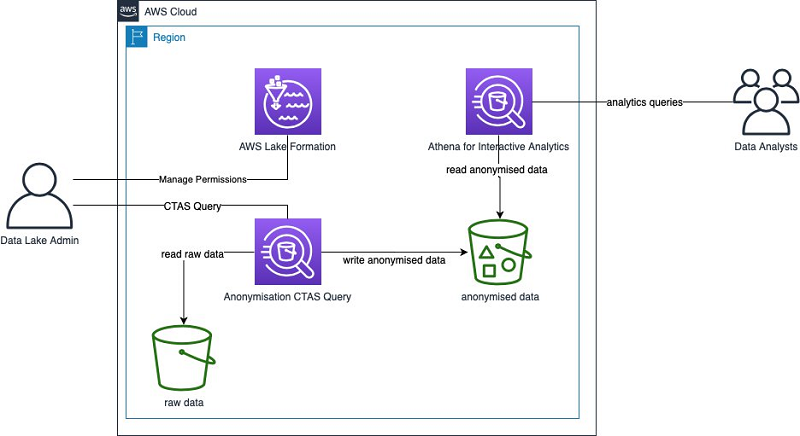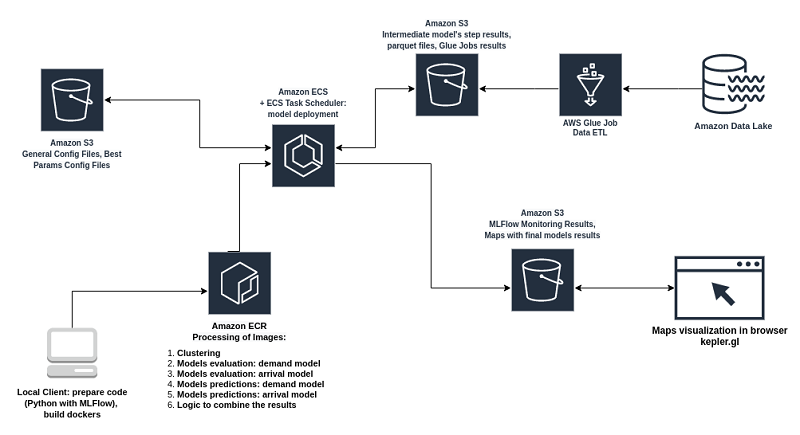AWS Big Data Blog
Tag: Amazon S3
Migrate data from an on-premises Hadoop environment to Amazon S3 using S3DistCp with AWS Direct Connect
This post demonstrates how to migrate nearly any amount of data from an on-premises Apache Hadoop environment to Amazon Simple Storage Service (Amazon S3) by using S3DistCp on Amazon EMR with AWS Direct Connect. To transfer resources from a target EMR cluster, the traditional Hadoop DistCp must be run on the source cluster to move […]
Build an ETL process for Amazon Redshift using Amazon S3 Event Notifications and AWS Step Functions
In this post we discuss how we can build and orchestrate in a few steps an ETL process for Amazon Redshift using Amazon S3 Event Notifications for automatic verification of source data upon arrival and notification in specific cases. And we show how to use AWS Step Functions for the orchestration of the data pipeline. It can be considered as a starting point for teams within organizations willing to create and build an event driven data pipeline from data source to data warehouse that will help in tracking each phase and in responding to failures quickly. Alternatively, you can also use Amazon Redshift auto-copy from Amazon S3 to simplify data loading from Amazon S3 into Amazon Redshift.
Automate the archive and purge data process for Amazon RDS for PostgreSQL using pg_partman, Amazon S3, and AWS Glue
The post Archive and Purge Data for Amazon RDS for PostgreSQL and Amazon Aurora with PostgreSQL Compatibility using pg_partman and Amazon S3 proposes data archival as a critical part of data management and shows how to efficiently use PostgreSQL’s native range partition to partition current (hot) data with pg_partman and archive historical (cold) data in […]
Run a data processing job on Amazon EMR Serverless with AWS Step Functions
Update Feb 2023: AWS Step Functions adds direct integration for 35 services including Amazon EMR Serverless. In the current version of this blog, we are able to submit an EMR Serverless job by invoking the APIs directly from a Step Functions workflow. We are using the Lambda only for polling the status of the job […]
Optimize Federated Query Performance using EXPLAIN and EXPLAIN ANALYZE in Amazon Athena
Amazon Athena is an interactive query service that makes it easy to analyze data in Amazon Simple Storage Service (Amazon S3) using standard SQL. Athena is serverless, so there is no infrastructure to manage, and you pay only for the queries that you run. In 2019, Athena added support for federated queries to run SQL […]
How to delete user data in an AWS data lake
General Data Protection Regulation (GDPR) is an important aspect of today’s technology world, and processing data in compliance with GDPR is a necessity for those who implement solutions within the AWS public cloud. One article of GDPR is the “right to erasure” or “right to be forgotten” which may require you to implement a solution […]
Anonymize and manage data in your data lake with Amazon Athena and AWS Lake Formation
Most organizations have to comply with regulations when dealing with their customer data. For that reason, datasets that contain personally identifiable information (PII) is often anonymized. A common example of PII can be tables and columns that contain personal information about an individual (such as first name and last name) or tables with columns that, if joined with another table, can trace back to an individual. You can use AWS Analytics services to anonymize your datasets. In this post, I describe how to use Amazon Athena to anonymize a dataset. You can then use AWS Lake Formation to provide the right access to the right personas.
How Wind Mobility built a serverless data architecture
We parse through millions of scooter and user events generated daily (over 300 events per second) to extract actionable insight. We selected AWS Glue to perform this task. Our primary ETL job reads the newly added raw event data from Amazon S3, processes it using Apache Spark, and writes the results to our Amazon Redshift data warehouse. AWS Glue plays a critical role in our ability to scale on demand. After careful evaluation and testing, we concluded that AWS Glue ETL jobs meet all our needs and free us from procuring and managing infrastructure.
Extend your Amazon Redshift Data Warehouse to your Data Lake
Amazon Redshift is a fast, fully managed, cloud-native data warehouse that makes it simple and cost-effective to analyze all your data using standard SQL and your existing business intelligence tools. Many companies today are using Amazon Redshift to analyze data and perform various transformations on the data. However, as data continues to grow and become […]
Running a high-performance SAS Grid Manager cluster on AWS with Amazon FSx for Lustre
SAS® is a software provider of data science and analytics used by enterprises and government organizations. SAS Grid is a highly available, fast processing analytics platform that offers centralized management that balances workloads across different compute nodes. This application suite is capable of data management, visual analytics, governance and security, forecasting and text mining, statistical […]









